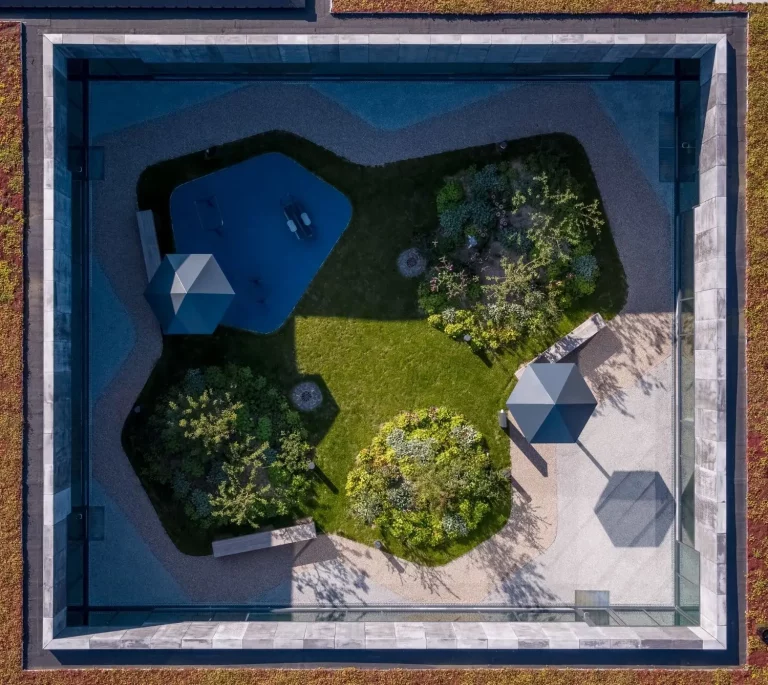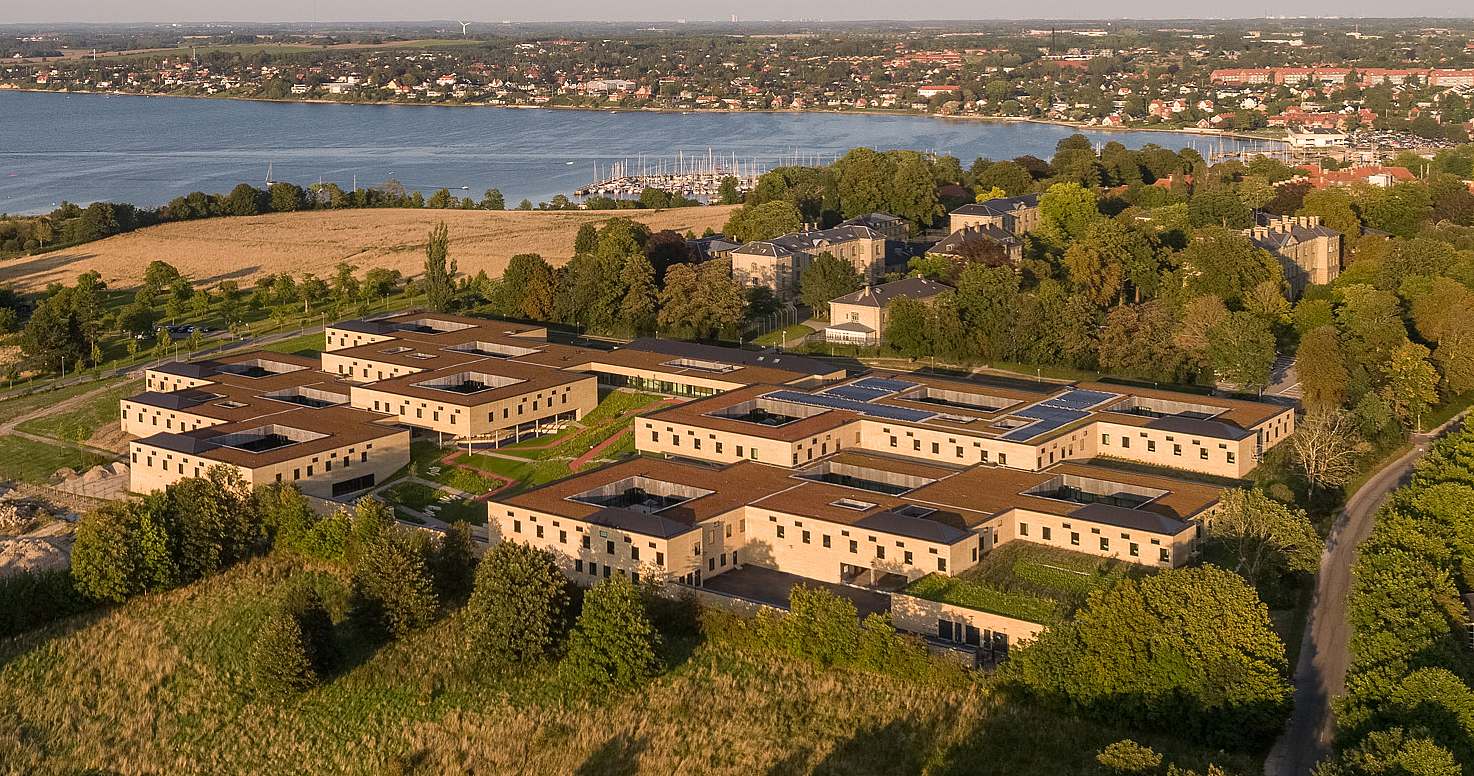The new Sct. Hans hospital is a model of healing architecture. The 20,700 m² building includes a brand new forensic psychiatric ward with 126 beds. The architecture is based on the beautiful surroundings in a hilly terrain that slopes down towards Roskilde Fjord. The new forensic psychiatric ward Sct. Hans offers 126 patients space for treatment and security in modern surroundings. Sct. Hans incorporates the surrounding nature into the main architectural design as an essential element of the healing architecture. The location of the buildings is adapted to the topography of the landscape, so that the buildings become part of the landscape and the landscape part of the building.
Roskilde
Denmark
Capital Region of Denmark's Psychiatry
2021
20 700 ㎡
DKK 700 M
Rubow arkitekter A/S, S&M A/S, Oluf Jørgensen A/S, Opland
Total consultant, design and ICT
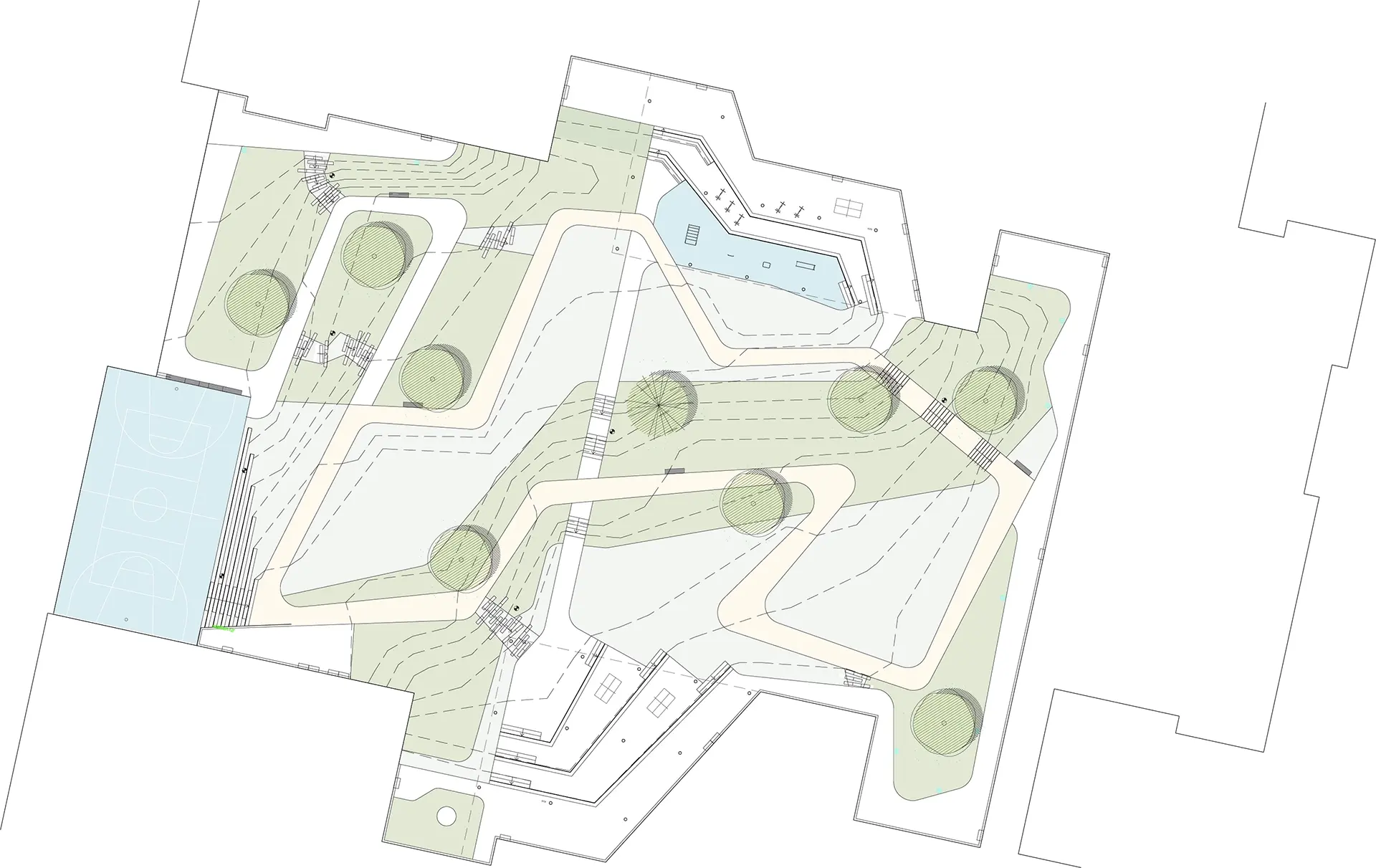
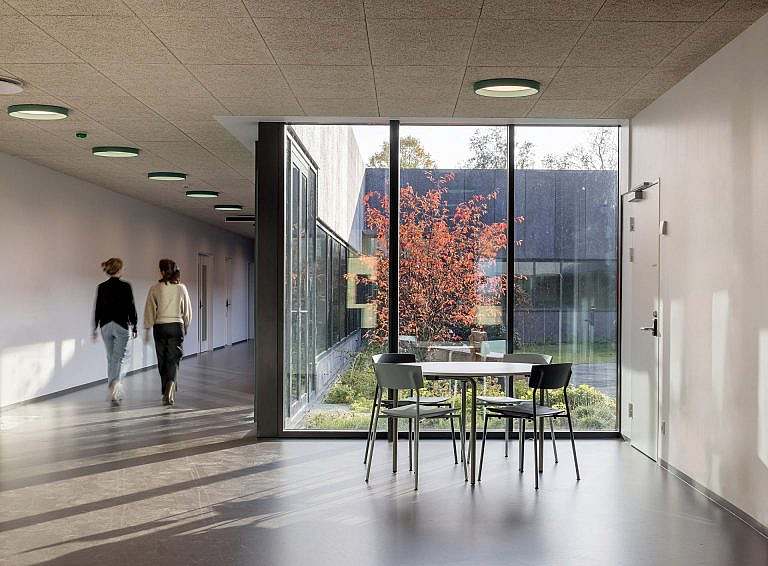
"To avoid visible screening measures that would give the forensic psychiatry an undesirable prison-like appearance, the building itself forms an outer wall that surrounds green communal areas and courtyards."
Mikkel Beedholm, Architect
Contact

Individual living rooms that let nature in and create a homely atmosphere
Healing architecture is also about creating a sense of homeliness for the psychiatric patient to support the healing process and reduce the feeling of being hospitalised or incarcerated. The patient rooms offer the opportunity to retreat and are oriented towards nature via a sloping ceiling that raises the view towards the window. This divides the space into two zones; a safe arrival zone and a private zone overlooking the beautiful landscape. This division gives the patient different spatial sensations and takes advantage of the proven positive influence of nature.
The main feature of the one-person living room is a built-in wooden unit that integrates a cupboard, shelves and table. This way, there is still room for the resident to put their own stamp on the room and the wood creates a warmth in the space that contributes to a homely feeling.
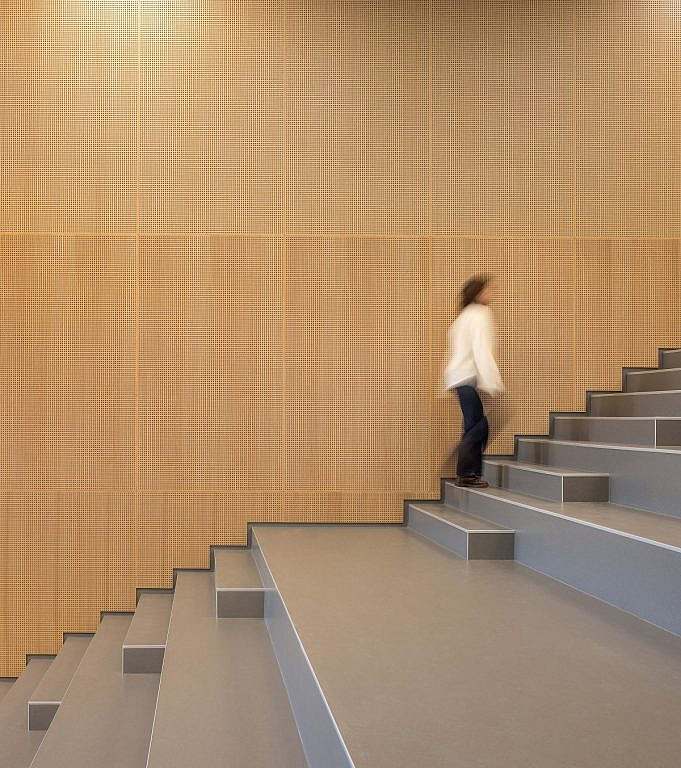
A good framework for a meaningful everyday life
The goal of the Forensic Psychiatric Center Sct. Hans is to prevent new crimes with individual psychiatric care, treatment and rehabilitation. The cornerstone of the treatment is to create a meaningful everyday life for the patients, where there is an opportunity to train and maintain everyday skills so that they can get back into society. Patients are hospitalised for an average of 4 years and it is hoped that the well-designed treatment facilities and personalised approach will help to reduce the length of stay.
Through staff engagement, KHR Architectures user experts received input to create the optimal design for the complex typology.
After Sct. Hans Ny Retspyskiatri has been put into use, a post occupancy study has evaluated whether the design has succeeded as intended and what lessons can be learnt for future projects.
Healing architecture both inside and out
Throughout the project there has been an intensive focus on creating healing architecture based on the latest knowledge in the field.
Nature and light have a proven positive impact on patients' well-being and Sct. Hans is therefore built into the landscape in a way that ensures beautiful views both from patient rooms, and corridors and common areas. There is never a view from one patient room to another, and high placed windows provide views even for bedridden patients.
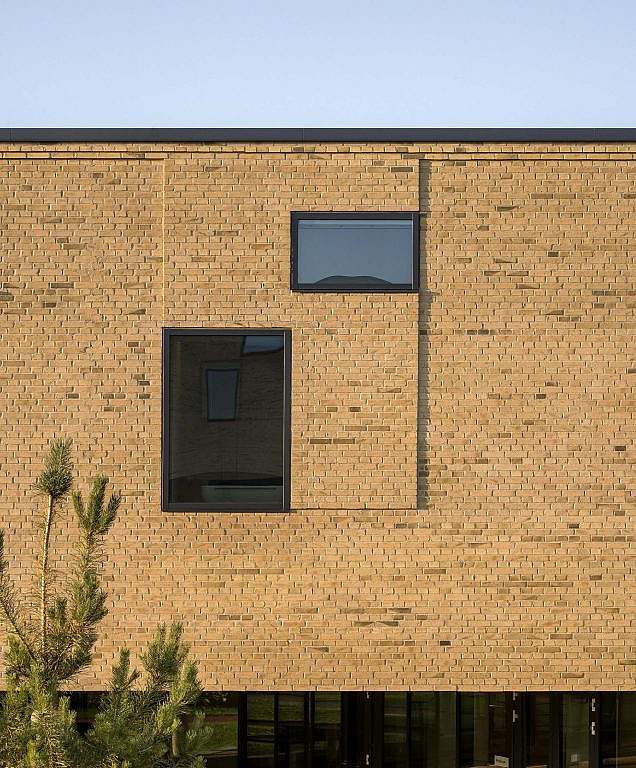
A common parameter for the planning is the focus on the well-being of patients and staff, workflows and safety
The new Sct. Hans Forensic Psychiatric Hospital consists of 4 bed units, outdoor and indoor community facilities and an arrival house with staff and visitor facilities. Each bed unit is designed as a cluster of three courtyard rooms. In total, it provides treatment and security in modern surroundings for 126 patients.
The arrival building, which is located in the extension of the axis through the existing Sct. Hans East, serves as the visual gateway to the development.
The facility also includes a large multi-purpose hall with a multifunctional staircase that can serve as a grandstand. Next to it is a large therapy pool, which is embedded in the ground in such a way that daylight is directed down the walls and creates an atmospheric spaciousness.
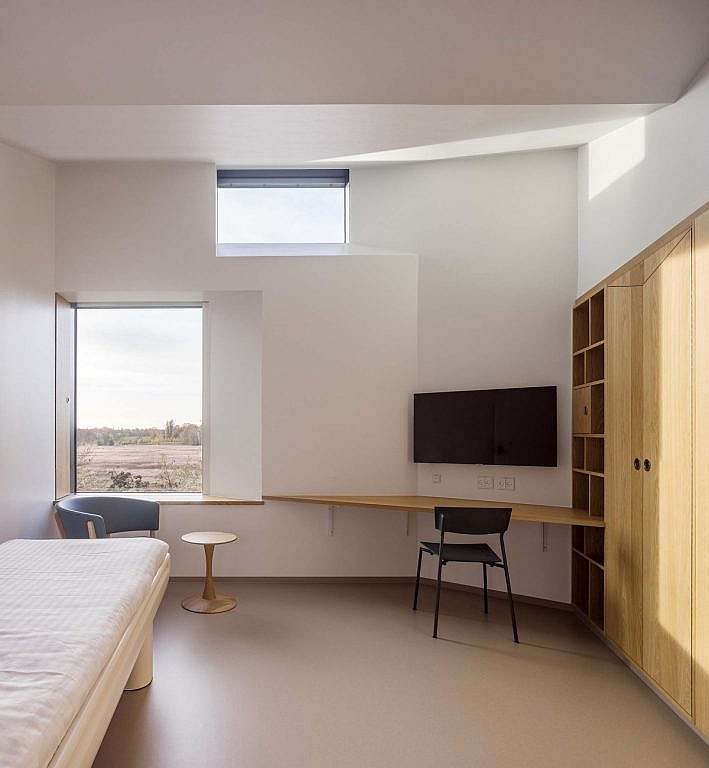
Facilities such as the multi-purpose room and therapy pool are used by a multidisciplinary rehabilitation team including occupational therapists, nurses and physiotherapists as part of the treatment. Outside, there is bronze sensory art created for the site by Sophia Kalkau.
